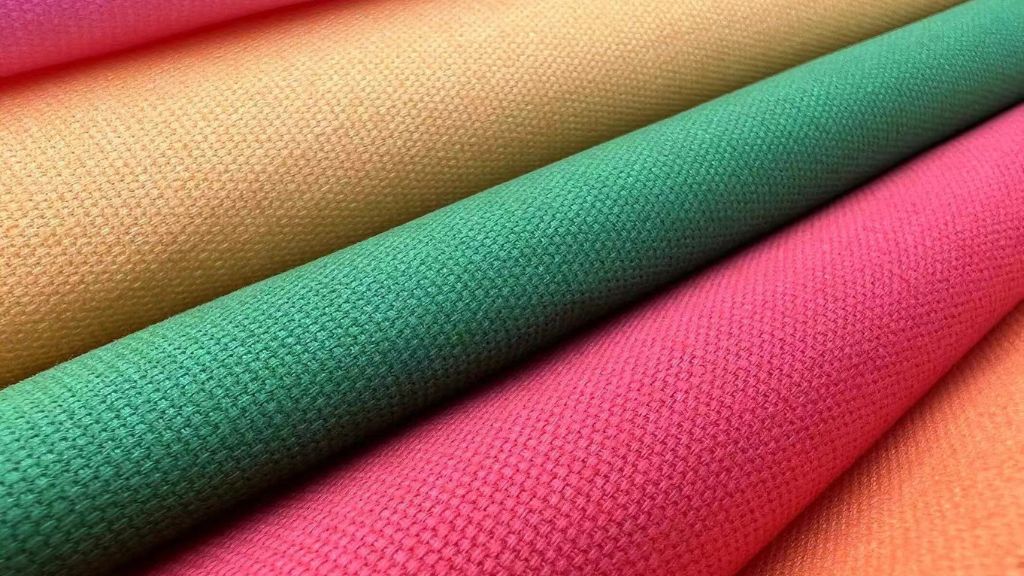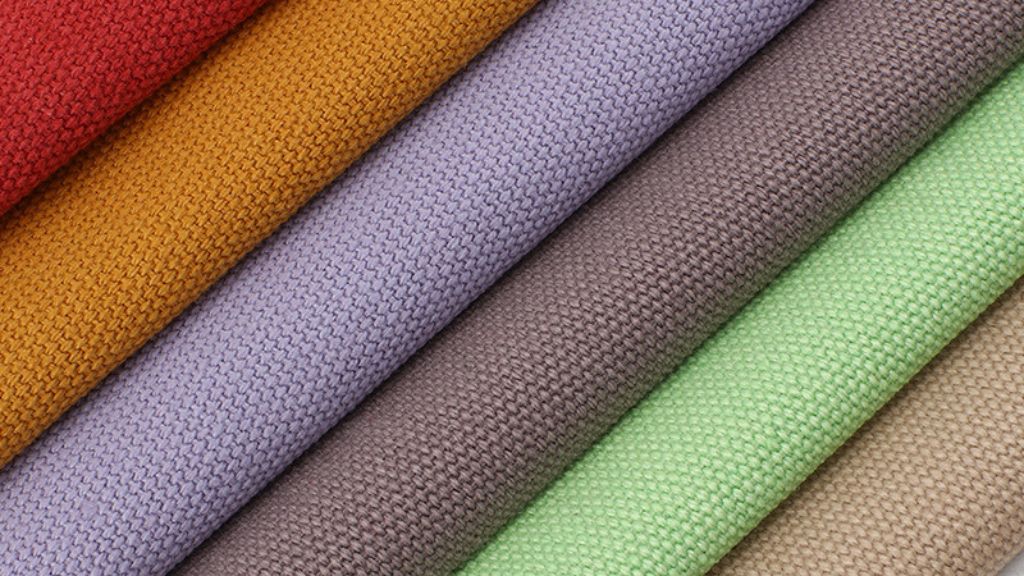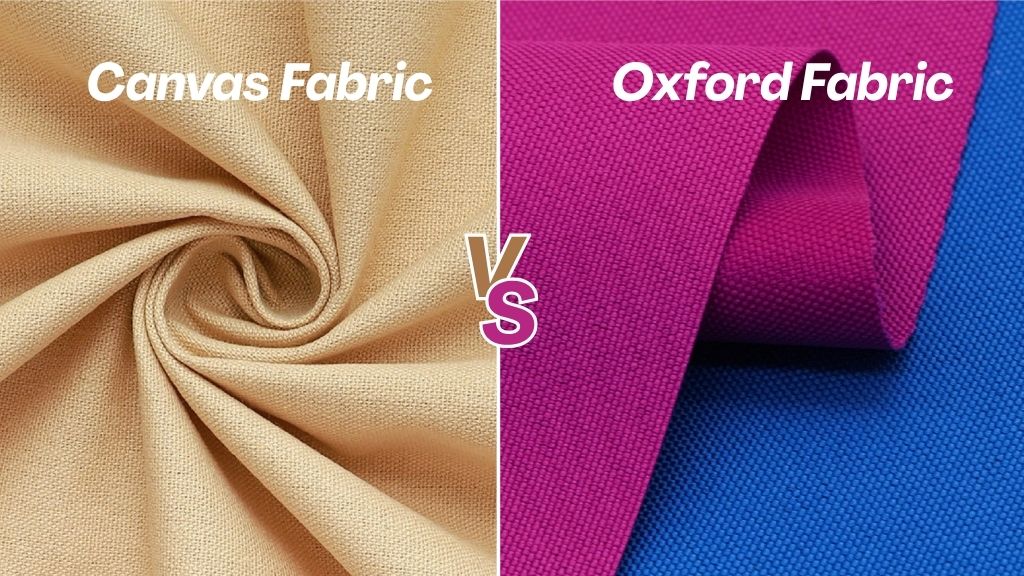What is Canvas Fabric? An In-Depth Explanation

Canvas fabric, known for its exceptional durability and tough texture, is a tightly woven textile boasting centuries-old heritage. Originally, canvas was used to make practical items such as sails and tents, but today, it is most often found in your favorite handbags, classic sneakers, and functional workwear. In this guide, we‘ll explore what canvas fabric is, its history, different types, common uses, advantages and disadvantages, and how to care for it. By the end, you’ll have a comprehensive understanding of this versatile material. Let’s get started!
What Is Canvas Fabric?
Canvas fabric is a strong and durable textile characterized by its unique, tightly woven structure. Its warp and weft threads are closely interwoven, forming a clearly visible texture. Canvas can be manufactured using different weaving methods, including plain weave, twill weave, and herringbone weave, which affect its texture and strength. It is suitable for items that need to withstand heavy use, such as backpacks, shoes, work clothes, tents, and sails. Beyond these practical uses, canvas is also widely used as a painting surface, commonly employed by artists for oil, acrylic, and mixed-media works.
History and Evolution of Canvas
Canvas has a long and fascinating history that spans centuries. Its name comes from the French phrase “toile de voile”, meaning “sailcloth,” which reflects its earliest uses in making sails for ships. Over time, the application of canvas has expanded beyond the maritime field. Artists began using canvas as a painting medium in the 15th century, especially in Venice, where the sailcloth industry provided easy access to this material.
By the 19th century, canvas had become a popular material for everyday items, including tents, workwear, and luggage. Today, it still remains a versatile textile, widely used in fashion, home decor, outdoor gear, and numerous creative projects, solidifying its status as a timeless material.
What Is Canvas Material Made of?
Canvas is not a single fiber, but a type of thick, tightly woven fabric. Historically, canvas was crafted from hemp or linen, but later it was mainly made from cotton, which is why many people today think canvas only refers to cotton fabrics. In modern manufacturing, canvas can be produced from multiple fibers. The most common options include cotton, polyester, and cotton-polyester blends. For outdoor and industrial applications, other fibers such as nylon, polypropylene, or acrylic are also used to increase tensile strength, water resistance, and UV performance. In addition, most modern canvas is not left in a “raw” state. It is usually finished with technical treatments like wax coating, PU coating, or PVC coating to enhance water repellency, abrasion resistance, and structural rigidity.
What Is Canvas Duck Fabric?
Duck canvas is a specific type of canvas known for its dense weave and durability. Unlike standard canvas, duck canvas is tightly woven and can support heavier loads. The term “duck” does not refer to the animal but comes from the Dutch word “doek,” which means cloth. Duck canvas is often used for backpacks, shoes, workwear, and tents. Its strength and reliability make it a perfect choice for applications that demand heavy-duty performance.
Is Canvas Fabric Waterproof?
Canvas in its natural form is not waterproof. However, it can be treated to resist water. Waxed canvas, for example, is coated with wax to make it water-resistant while maintaining its durability. Some modern canvas fabrics are coated with synthetic materials to achieve waterproofing without affecting texture or flexibility. Daily care, such as cleaning and reapplying protective coatings, can help maintain water resistance over time.
Types of Canvas Fabric
By Weave
Plain Canvas: Plain canvas uses a basic over-under structure. It is the most classic type of canvas, presenting a balanced surface appearance, but the texture may be more pronounced. Many entry-level canvas products are made from plain weave because it offers a stable foundation at a lower processing cost.
Duck Canvas: Duck canvas is constructed with a tighter and smoother weave compared with plain canvas. The denser yarn system provides higher tensile strength and better abrasion resistance. Therefore, duck canvas is often selected for products that require long-term durability, such as tote bags, workwear, upholstery, and industrial gear.
Herringbone Canvas: Herringbone canvas features a distinctive zig-zag pattern created by alternating the direction of the twill. This design adds visual interest and a subtle premium texture, while still retaining the structural strength of canvas. Though not as common as plain or duck, it is preferred in higher-end apparel and accessories where both texture and aesthetics matter.
By Material
Cotton Canvas: Cotton canvas, the most common option being 100% cotton, is soft, breathable, and comfortable to the touch. It is widely used for bags, shoes, and casual clothing because it balances durability with natural comfort. Additionally, this canvas takes dye well, allowing for vibrant colors and varied designs.
Polyester Canvas (Poly Canvas): Compared with cotton canvas, polyester canvas fabric has higher tensile strength and stronger abrasion resistance. It is commonly used in outdoor gear, protective covers, and industrial bags where durability and stability are critical.
Cotton-Polyester Blended Canvas: Blended canvas combines the natural softness of cotton with the strength of polyester. This makes it ideal for products that require both comfort and long-term structural integrity, such as backpacks and workwear.
Nylon Canvas: Nylon canvas has extremely strong abrasion resistance and excellent tear resistance. It is particularly suited for tactical gear, heavy-duty backpacks, and outdoor performance products that need to withstand demanding conditions.
Linen Canvas: Linen canvas fabric has a natural luster and a crisp, firm hand. Historically used for painting and premium textiles, it remains valued in high-end artistic and heritage applications for its durability and elegant texture.
Hemp Canvas: Hemp canvas is exceptionally strong and naturally resistant to mold and mildew. It is one of the most sustainable options, increasingly favored as an eco-friendly alternative to cotton for bags, workwear, and specialty textiles.
By Functional Treatment
Waxed Canvas: Waxed canvas is treated with a layer of wax to enhance water resistance and durability. Over time, it develops a unique patina, giving bags, jackets, and outdoor gear a distinctive vintage style.
PU-Coated Canvas: PU-coated canvas features a thin polyurethane layer that improves water repellency and surface strength without making the fabric overly stiff. It is commonly used for backpacks, protective covers, and semi-outdoor applications. Compared with PVC coatings, PU offers greater flexibility and breathability, which is useful for daily carry items.
PVC-Coated Canvas: PVC-coated canvas provides superior waterproofing and structural rigidity, making it ideal for heavy-duty tarps, truck covers, and marine equipment. Though less flexible than waxed or PU-coated versions, it ensures excellent durability under harsh conditions.
Waterproof Canvas: Waterproof canvas fabric is a broad category that includes any canvas treated or laminated to resist water penetration. Beyond basic protection, it is suitable for tents, awnings, and other outdoor structures that require reliable performance against the elements.
By Sustainability
Recycled Polyester Canvas: Recycled polyester canvas fabric is made from post-consumer PET bottles or other recycled polyester sources. It reduces environmental impact by lowering energy consumption and waste. In addition, it retains much of the durability and water resistance of virgin polyester, making it a practical and eco-conscious choice for bags and outdoor gear.
Organic Cotton Canvas: Organic cotton canvas fabric is produced without synthetic pesticides or chemical fertilizers. Despite being slightly more expensive, it is favored by brands and consumers seeking environmentally friendly materials. It also maintains the softness, breathability, and dyeability of conventional cotton, making it suitable for a wide range of lifestyle products.

What Are the Common Uses of Canvas Fabric?
For Upholstery
Many types of canvas fabric can be used for upholstery, with heavier fabrics such as duck canvas or cotton-poly blends being particularly popular. These materials are strong, durable, and able to maintain their shape under frequent use. Treated versions, like waxed or PU-coated canvas, provide extra protection against stains and moisture. Whether you’re giving new life to a vintage armchair or designing seating for a high-traffic space, canvas is the perfect blend of form and function.
For Bags
Canvas is a popular material for bags because of its strength and versatility. It is commonly used for tote bags, backpacks, duffel bags, and messenger bags. Canvas can be printed or dyed, allowing for creative and personalized designs. Its sturdiness ensures that bags can carry heavy items without tearing, making it highly favored in both fashion and functional markets.
For Painting
Cotton canvas is a staple for painting. It provides a smooth and stable surface suitable for oil, acrylic, and mixed-media artworks. Artists often stretch canvas over wooden frames, and it can be primed or unprimed depending on the type of paint used. Canvas ensures the artwork maintains its shape and texture while offering long-lasting durability.
For Outdoor Gear
Outdoor canvas is treated to be water-resistant, windproof, and UV-resistant. It is commonly used for tents, awnings, boat covers, and outdoor furniture covers. Its excellent durability makes it perfect for outdoor activities and rugged environments, providing reliable protection against the elements.
For Clothing
Canvas is also used in clothing for its toughness and long-lasting wear. It is found in jackets, overalls, aprons, and casual outerwear. Canvas clothing can be dyed or printed for style while offering durability and protection, combining practical functionality with fashion appeal.
Pros and Cons of Canvas Cloth
Pros of Canvas Cloth
Durable and Long-Lasting: Canvas fabric is known for its strength and ability to withstand frequent use, making it ideal for bags, clothing, upholstery, and outdoor gear.
Versatile: Whether you’re crafting backpacks, painting on cotton canvas, or designing tents and sails, canvas adapts to a wide range of applications.
Customizable: Canvas takes dye well and can be printed, painted, or treated, giving you flexibility for both functional and creative projects.
Water and Weather Resistance: Many modern canvas fabrics come treated with wax, PU, or PVC coatings, making them suitable for outdoor canvas fabric uses like awnings, tents, and workwear.
Eco-Friendly Options: Organic cotton canvas and recycled polyester canvas provide environmentally conscious alternatives for those looking to reduce their footprint.
Cons of Canvas Cloth
Heavy and Stiff: Compared with lighter fabrics, canvas can feel thick and rigid, which may not be ideal for certain types of clothing or soft furnishings.
Requires Maintenance: Untreated canvas can stain or absorb water, so regular cleaning or using treated canvas is recommended for long-term use.
Prone to Wrinkles: Some canvas fabrics, especially 100% cotton canvas fabric, can crease easily and may require ironing to maintain a smooth appearance.
Limited Stretch: Canvas has very little elasticity, which can restrict movement in clothing or fitted items.
Canvas vs Oxford Fabric: Which Is Better?
Canvas and Oxford are both popular fabrics, but they serve different purposes due to their unique characteristics.
Canvas Fabric: Canvas is thick, tightly woven, and highly durable. It is ideal for items that require strength and longevity, such as backpacks, workwear, tents, and upholstery. Canvas can also be treated for water resistance, making it versatile for both indoor and outdoor uses. Its texture and weight provide a sturdy feel, and it is often chosen for creative projects like painting.
Oxford Fabric: Oxford fabric is typically lighter, softer, and has a basket-weave texture. It is commonly used for shirts, casual clothing, and some lightweight bags. While Oxford fabric offers comfort and breathability, it is less rugged than canvas and not ideal for heavy-duty applications.

Which One Should you Choose?
The choice between canvas and Oxford depends on your needs. If durability and strength are your priorities, especially for outdoor gear or items that undergo frequent use, canvas is the better option. On the other hand, if you are looking for a lighter, softer, and more comfortable fabric for clothing or casual items, Oxford fabric is more suitable.
| Feature | Canvas Fabric | Oxford Fabric |
| Weave / Texture | Tightly woven, heavy-duty Can be plain, twill, or herringbone | Basket-weave pattern. Softer and lighter texture |
| Durability | Very strong and long-lasting. Suitable for heavy use | Moderate durability. Not ideal for heavy-duty applications |
| Weight | Heavy to medium weight | Light to medium weight |
| Flexibility / Comfort | Less flexible with a stiffer feel | Soft and breathable, more comfortable for clothing |
| Water Resistance | Can be treated with wax, PU, or PVC for water resistance | Generally not water-resistant unless specially treated |
| Common Uses | Backpacks, tote bags, workwear, tents, upholstery, painting | Shirts, casual clothing, lightweight bags |
| Maintenance | May require cleaning or treatment to maintain appearance | Easy to wash and generally low maintenance |
| Appearance | Textured, rugged, and sturdy look | Smooth, neat, and polished appearance |
How to Care for Canvas Fabric?
Regular Cleaning: For everyday maintenance, gently brush off dust and dirt. Light stains can be cleaned with a damp cloth and mild soap. Avoid harsh detergents that could damage the fibers or the finish.
Washing: Many canvas fabrics can be hand-washed or machine-washed on a gentle cycle. Make sure to use cold water to prevent shrinkage. Always check if the canvas has any special coatings, like wax or PU, before washing, as these may require spot cleaning instead.
Drying: Air drying is best for canvas fabric. Avoid high heat, as it can weaken fibers and damage coatings. Hang items or lay them flat to maintain their shape.
Protection: For canvas fabric used outdoors, such as tents or backpacks, reapply waterproofing treatments like wax or specialized sprays periodically to maintain water resistance.
Storage: Store canvas items in a cool, dry place to prevent mold and mildew. Avoid long-term exposure to direct sunlight, which can fade colors and degrade fibers over time.
Conclusion
Canvas is a sturdy, durable, and versatile textile that has stood the test of time. Originally used for sails and tents, it is now found in a wide variety of modern applications, including backpacks, tote bags, upholstery, outdoor gear, and artistic canvases. By understanding the different types of canvas, their materials, and how to care for them, you can make informed choices for your projects.
If you are looking to buy canvas fabric, Factotex offers a wide selection of high-quality options suitable for clothing, bags, upholstery, and creative projects. Whether you are a crafter, designer, or outdoor enthusiast, canvas fabric remains a reliable and practical choice that stands the test of time.
Working With Facto Textile
We promise you:
- A wide variety of high- quality fabrics
- Full range of customized services
- Professional production technology
- Sincere Cooperation
Contact Us To Start Your Fabric Project
Please send us your message, we will reply within 20 hours.
